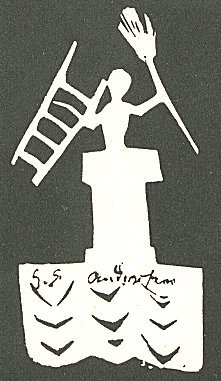Hans Christian Andersen
Hans Christian Andersen (2 April 1805 – 4 August 1875) was a Danish author. Although a prolific writer of plays, travelogues, novels, and poems, Andersen is best remembered for his fairy tales. Andersen's fairy tales, consisting of stories such as "The Little Mermaid", "The Ugly Duckling", and "The Emperor's New Clothes", have become part of the Western canon and are still popular, not only among children but also adults. His stories have been translated into over 125 languages and have inspired ballets, plays, and animated and live-action films.
Early Life[edit | edit source]
Hans Christian Andersen was born in Odense, Denmark, in 1805. The son of a shoemaker and a washerwoman, Andersen faced poverty in his early years. Despite these humble beginnings, Andersen was a creative and imaginative child who developed a passion for literature. At the age of 14, he moved to Copenhagen to seek employment as an actor. Failing to make a significant impact in the theatre, Andersen turned to writing, a decision that would eventually lead to his international fame.
Career[edit | edit source]
Andersen's early work included a few tragedies, a book detailing his travels in Europe, and a novel. However, it was his fairy tales, first published in 1835, that captured the public's imagination. Unlike the moralizing tales of his contemporaries, Andersen's stories often featured elements of fantasy, humor, and a deep understanding of human nature. His ability to appeal to both children and adults with his storytelling was revolutionary at the time.
Andersen's tales were not initially recognized for their greatness. It was only later, as his stories were translated and published abroad, that Andersen gained fame. By the mid-19th century, Andersen was celebrated throughout Europe and had received numerous honors from royalty.
Themes and Style[edit | edit source]
Andersen's fairy tales are known for their elements of fantasy, their moral lessons, and their insight into the human condition. His stories often feature protagonists who undergo trials and tribulations but eventually find happiness. Andersen's use of the fairy tale genre allowed him to explore themes of beauty, innocence, and the struggles of the underprivileged in a manner that was accessible to people of all ages.
Legacy[edit | edit source]
Hans Christian Andersen's impact on the literary world is immeasurable. His fairy tales have become a staple of childhood literature and have been adapted into numerous forms of media. The Hans Christian Andersen Award, named in his honor, is presented to authors and illustrators who have made lasting contributions to children's literature.
Andersen's influence extends beyond literature; his stories have inspired countless works of art, music, and film. His ability to dream and create magical worlds continues to inspire and entertain audiences around the globe.
Death[edit | edit source]
Hans Christian Andersen died in 1875, in Copenhagen, Denmark. His legacy, however, lives on through his timeless stories, which continue to enchant readers of all ages.
Search WikiMD
Ad.Tired of being Overweight? Try W8MD's physician weight loss program.
Semaglutide (Ozempic / Wegovy and Tirzepatide (Mounjaro / Zepbound) available.
Advertise on WikiMD
|
WikiMD's Wellness Encyclopedia |
| Let Food Be Thy Medicine Medicine Thy Food - Hippocrates |
Translate this page: - East Asian
中文,
日本,
한국어,
South Asian
हिन्दी,
தமிழ்,
తెలుగు,
Urdu,
ಕನ್ನಡ,
Southeast Asian
Indonesian,
Vietnamese,
Thai,
မြန်မာဘာသာ,
বাংলা
European
español,
Deutsch,
français,
Greek,
português do Brasil,
polski,
română,
русский,
Nederlands,
norsk,
svenska,
suomi,
Italian
Middle Eastern & African
عربى,
Turkish,
Persian,
Hebrew,
Afrikaans,
isiZulu,
Kiswahili,
Other
Bulgarian,
Hungarian,
Czech,
Swedish,
മലയാളം,
मराठी,
ਪੰਜਾਬੀ,
ગુજરાતી,
Portuguese,
Ukrainian
Medical Disclaimer: WikiMD is not a substitute for professional medical advice. The information on WikiMD is provided as an information resource only, may be incorrect, outdated or misleading, and is not to be used or relied on for any diagnostic or treatment purposes. Please consult your health care provider before making any healthcare decisions or for guidance about a specific medical condition. WikiMD expressly disclaims responsibility, and shall have no liability, for any damages, loss, injury, or liability whatsoever suffered as a result of your reliance on the information contained in this site. By visiting this site you agree to the foregoing terms and conditions, which may from time to time be changed or supplemented by WikiMD. If you do not agree to the foregoing terms and conditions, you should not enter or use this site. See full disclaimer.
Credits:Most images are courtesy of Wikimedia commons, and templates, categories Wikipedia, licensed under CC BY SA or similar.
Contributors: Prab R. Tumpati, MD





